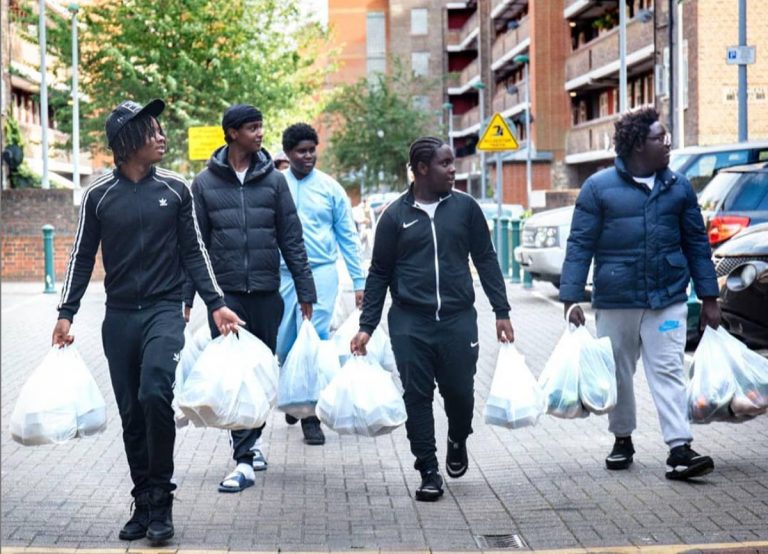Meet the teenagers running a community food shop on a Hackney estate
For over a year now RISE 365 and Made Up Kitchen, along with the help of a group of teenagers, have been looking after their neighbours through a community food response programme, distributing nearly 30,000 culturally appropriate dishes, and over 20,000 bags of shopping to date.
The community food shop, which is located on the Kingsmead estate in East London, was created at the beginning of the coronavirus pandemic as a way to help give something back to those in need. Before the pandemic, the Hackney estate had already seen turbulent times, “with youth violence at high levels in the area,” reports MyLondon.
When lockdowns were first implemented across the UK, many lost their jobs, including residents living on the Kingsmead estate. That’s when Joyclen Brodie-Mends, founder of the youth organisation RISE 365, who has spent more than 18 years helping young people from the area, decided to make sure that the estate and the community surrounding it had the support they desperately needed.
Brodie-Mends set up the community food shop for those on the estate struggling to make ends meet, and enlisted young people living in the area to help with the project as well as to provide some lost structure back in their days.
Around 20 teenagers involved in the project manage most of the operation, from sourcing the food from wholesalers to packaging and delivering it. In 2020, the community shop distributed nearly 30,000 hot meals and delivered food bags to 300 households in one weekend.
As reported by MyLondon, the community shop provides “hot meals and shopping bags with pasta, rice, oil, fruit, vegetables and meat for five pounds, with all the money made going back into the shop.”
Marvin, 26, is one of the young people involved in RISE 365. Speaking to the news website, he shared that he is currently working two jobs and living with his mum and sister on the estate. According to Marvin, the community food shop and the structure it implemented in his days saved him from going down the wrong path. “I’ve lived on the estate my whole life. I’ve seen it change from a bad place you couldn’t even walk through and a lot of crime involved. Joyclen played a big part in my life taking me away from that road. I’ve seen friends go down the bad path, I didn’t want to go down that path.”
“During September to October [2020], people liked the idea of delivering food on the estate. So a few of us got together and said ‘let’s do a community shop’,” he further explained. “I am the community and I might change someone’s outlook. I’m the delegator of tasks and I feel like the younger ones look up to me.”
Speaking about her project and the impact it has had both on the estate’s community and people’s perception of it, Brodie-Mends explained that “it’s something engaging and meaningful to do in their communities and gets them off the estates. Young people are usually associated with crime and negativity. We want to empower them and show there is nothing off-limits for young people.”
RISE 365, like many other initiatives, has not received any government funding for a long time (too long) and is now in dire need of funds to keep going. “Grassroots organisations have had to step up and make up for the shortfall. But we can’t keep on waiting for funding. We’re at risk of closing without it,” said Brodie-Mends.
Mid January 2021, the youth organisation set up a fundraising campaign on GoFundMe with an objective of £50,000. So far, the campaign has received £13,000 in donations. Unless RISE 365 reaches its goal, the community shop will have to close mid April due to lack of funding. If you’d like to help, you can donate here.






